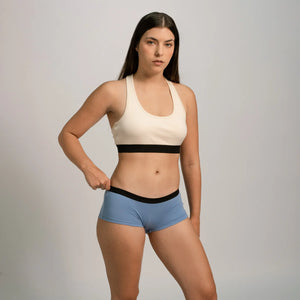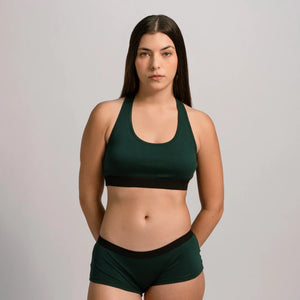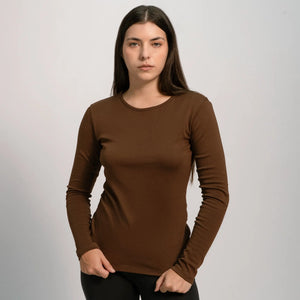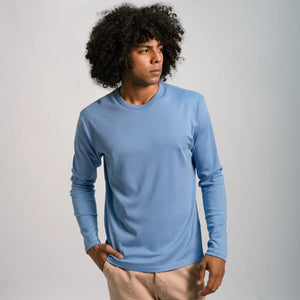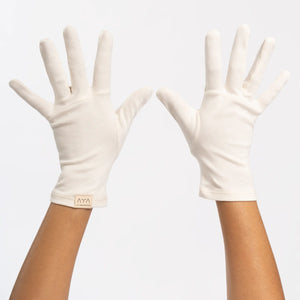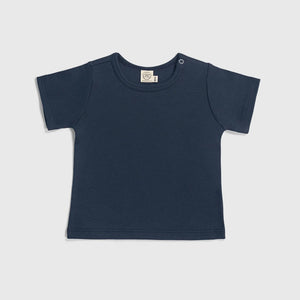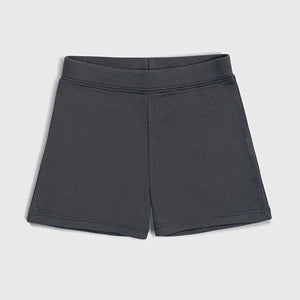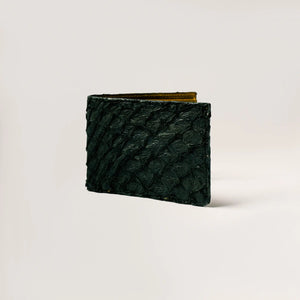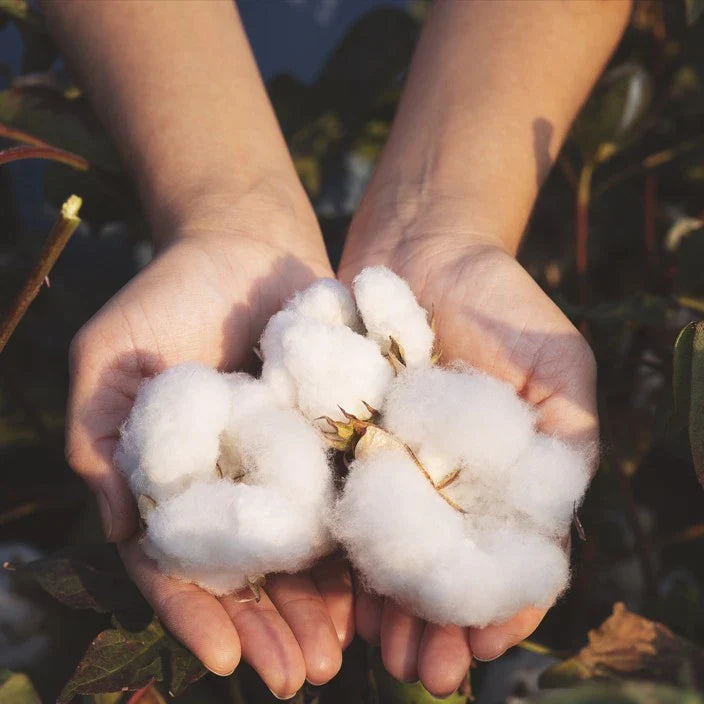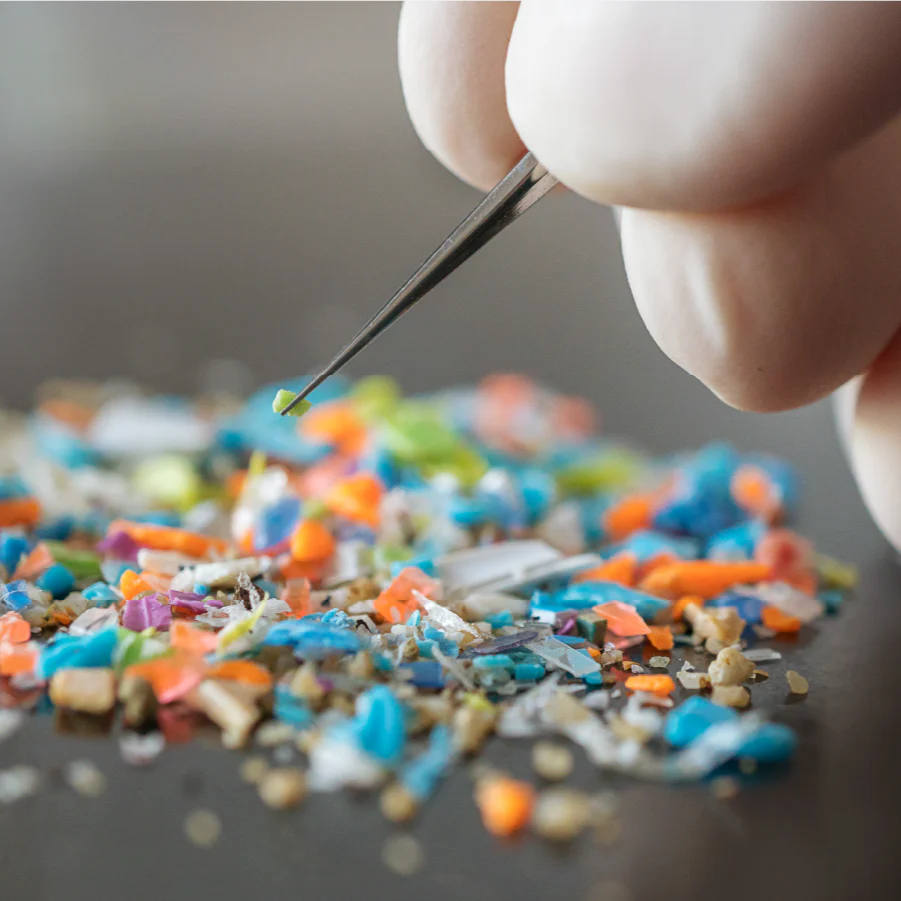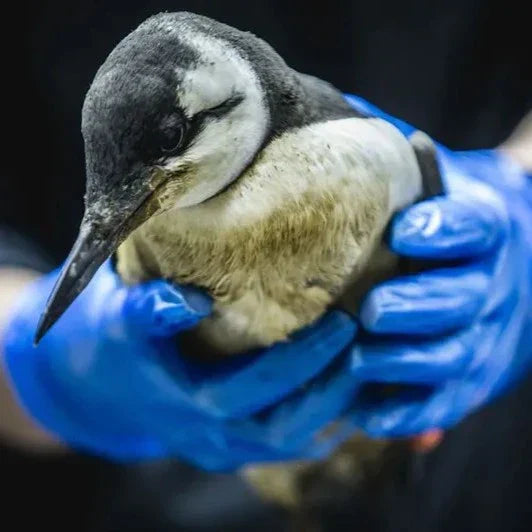Plastic-Free July: Say No to Single-Use Plastic and Synthetic Clothing
.
AYA | JULY 18, 2025
READING TIME: 5 minutes
By Jordy Munarriz
AYA | JULY 18, 2025
READING TIME: 5 minutes
By Jordy Munarriz
Plastic-Free July is a global campaign that began in 2011 in Australia and now reaches over 190 countries, encouraging people to refuse single-use plastics for a month—and ideally beyond. It’s more than a challenge; it’s a growing movement reshaping consumption habits, raising awareness, and driving systemic change around plastic use in our daily lives [1,2].
While much attention is given to single-use plastics like bags and disposable plastics like bottles and containers, a silent but significant source of pollution often goes unnoticed: synthetic clothing. This Plastic-Free July, we explore the role of fashion in plastic pollution and how choosing organic fibers like Pima cotton can help shift the narrative.
Microplastics in Your Closet
Synthetic textiles, like polyester, nylon, and acrylic, account for over 60% of global fiber production [3]. Though marketed as performance fabrics, these materials are petroleum-based plastics. And like single-use items, they don't biodegrade. Every time synthetic clothing is washed, it releases microplastic fibers that infiltrate our water systems, food chains, and even our own bodies.
- A single polyester garment can release more than 700,000 microfibers per wash [4].
- Microplastics have been found in marine species, table salt, drinking water, and even human lungs and placentas [5,6].
- Today, synthetic microfibers are the leading source of primary microplastic pollution in oceans—more than microbeads ever were [7].
This form of pollution is often invisible but increasingly urgent. It underscores that fashion, like food and packaging, must be reimagined through a plastic-free lens.

The Plastic Footprint of Fast Fashion
Despite its glittering storefronts and glossy marketing, the controversy over fast fashion is no longer theoretical. Around the world, policymakers and citizens alike are waking up to the tangible consequences of plastic-based clothing.
In France, lawmakers have taken a bold step by passing legislation in early 2025 aimed at limiting ultra-fast fashion: The Anti-Fast Fashion Law. It directly targets brands that rely heavily on synthetic materials and overproduction, such as Shein and Temu. The new regulation introduces environmental impact labels, discourages excessive advertising, and even imposes financial penalties on companies that flood the market with short-lived, petroleum-based garments [8]. At its core, the French law acknowledges what many in the industry still deny: that synthetic clothes are not just unsustainable—they are part of a growing public health and ecological crisis.
Meanwhile, in Argentina, the fast fashion landscape is undergoing a different kind of transformation. The abrupt retreat of Forever 21 from the Argentine market in 2025 is more than just a business decision. It reflects a growing disconnect between extractive, plastic-based fashion models and the economic and environmental realities of Global South countries [9]. With rising awareness around pollution, local movements have criticized fast fashion for overwhelming national markets with low-cost, low-durability imports—items often made from polyester blends that quickly end up in landfills or incinerators.
These developments expose a central truth: fast fashion’s plastic dependency is no longer just a hidden environmental burden—it is becoming a liability. As consumers demand transparency and durability, and as governments begin to act, the industry’s petroleum-soaked infrastructure is facing overdue scrutiny.

Why Organic Cotton Is a Better Alternative
Organic cotton offers a plastic-free solution rooted in natural farming systems and circular design. But not all cotton is created equal. Peruvian organic Pima cotton stands out for its long staple fibers, which make it luxuriously soft, durable, and resistant to pilling.
How Organic Cotton Compares to Synthetics:
| Feature | Organic Pima Cotton | Synthetic Fibers |
|---|---|---|
| Origin | Grown from natural seeds in regenerative fields | Derived from fossil fuels |
| Biodegradability | Yes (months) | No (centuries) |
| Skin Sensitivity | Hypoallergenic | May cause irritation/allergies [10] |
| Microplastic Shedding | None | High [4] |
| End-of-life | Compostable | Persistent waste |
Organic Pima cotton is grown without GMOs, pesticides, or synthetic fertilizers. It uses primarily rainwater, significantly reducing water stress compared to conventional cotton [11,12]. And because it's harvested manually, the integrity of each fiber is preserved—making it ideal for premium-quality clothing that lasts.
But beyond the environmental impact and fiber quality, organic pima cotton embodies a broader ethical and social commitment. Grown in small-scale, often family-run farms, organic Pima cotton supports rural economies through fair pricing, non-exploitative labor, and long-term supplier relationships. These aren’t abstract values; they translate into real benefits: families with stable income, the preservation of local agricultural knowledge, and resistance to extractive industrial models.

AYA’s Plastic-Free Commitment
At AYA, we believe that sustainability starts with the materials we choose—and how we treat those who cultivate and craft them. Our garments are made exclusively with 100% organic Peruvian Pima cotton, free of synthetic blends, coatings, or finishes.
What Makes AYA Plastic-Free:
- 100% Organic Pima Cotton: No polyester, nylon, acrylic, or blended fabrics—just natural, breathable softness.
- Natural Threads & Labels: We avoid hidden plastics in stitching or tags, opting for fully compostable components: pima cotton.
- Low-Impact Dyes: Our fabrics are colored using GOTS-certified low-impact dyes, free from petroleum-based pigments.
- Plastic-Free Packaging: All orders ship in recyclable and compostable materials—no polybags, no foam, no shrink wrap.
- Short, Transparent Supply Chain: All production takes place in Peru, supporting local farmers and artisans while reducing transport-related emissions.
We design with durability in mind: timeless pieces meant to be worn often and cherished longer. In doing so, we move away from fast fashion’s disposability and toward a regenerative model rooted in respect—for people and the planet.
Changing Demographics and Preferences
The pandemic also highlighted shifting demographics in the fashion market. Younger consumers, particularly Gen Z and Millennials, became increasingly influential in shaping purchasing trends. Research from the Institute for Sustainable Fashion indicates that younger generations are more likely to support sustainable brands, with 83% of Millennials stating they prefer to buy from companies that share their values [7,8].
Moreover, with the rise of remote work, many consumers reported a preference for comfort over style. A study published in the Journal of Fashion Marketing and Management noted that comfort became the primary driver of clothing purchases for many consumers, with 65% prioritizing comfort in their buying decisions [9]. This trend is likely to persist as remote work becomes a more permanent aspect of many industries.

Changing Demographics and Preferences
The pandemic also highlighted shifting demographics in the fashion market. Younger consumers, particularly Gen Z and Millennials, became increasingly influential in shaping purchasing trends. Research from the Institute for Sustainable Fashion indicates that younger generations are more likely to support sustainable brands, with 83% of Millennials stating they prefer to buy from companies that share their values [7,8].
Moreover, with the rise of remote work, many consumers reported a preference for comfort over style. A study published in the Journal of Fashion Marketing and Management noted that comfort became the primary driver of clothing purchases for many consumers, with 65% prioritizing comfort in their buying decisions [9]. This trend is likely to persist as remote work becomes a more permanent aspect of many industries.

Changing Demographics and Preferences
The pandemic also highlighted shifting demographics in the fashion market. Younger consumers, particularly Gen Z and Millennials, became increasingly influential in shaping purchasing trends. Research from the Institute for Sustainable Fashion indicates that younger generations are more likely to support sustainable brands, with 83% of Millennials stating they prefer to buy from companies that share their values [7,8].
Moreover, with the rise of remote work, many consumers reported a preference for comfort over style. A study published in the Journal of Fashion Marketing and Management noted that comfort became the primary driver of clothing purchases for many consumers, with 65% prioritizing comfort in their buying decisions [9]. This trend is likely to persist as remote work becomes a more permanent aspect of many industries.

Changing Demographics and Preferences
The pandemic also highlighted shifting demographics in the fashion market. Younger consumers, particularly Gen Z and Millennials, became increasingly influential in shaping purchasing trends. Research from the Institute for Sustainable Fashion indicates that younger generations are more likely to support sustainable brands, with 83% of Millennials stating they prefer to buy from companies that share their values [7,8].
Moreover, with the rise of remote work, many consumers reported a preference for comfort over style. A study published in the Journal of Fashion Marketing and Management noted that comfort became the primary driver of clothing purchases for many consumers, with 65% prioritizing comfort in their buying decisions [9]. This trend is likely to persist as remote work becomes a more permanent aspect of many industries.


Manual harvesting of organic cotton in Peruvian fields.
Beyond Plastic-Free July: Reduce Plastic in Your Wardrobe
Plastic-Free July is just the beginning. Here’s how to make lasting change through what you wear:
- Take a closer look at your clothes: Read the labels and choose garments made from 100% natural fibers like organic cotton, linen, or wool. These materials are better for your skin and the planet.
- Rethink your laundry habits: Washing your clothes less often, using cold water, and air drying can help reduce microfiber pollution and extend the life of your garments.
- Watch out for greenwashing: Labels like “eco-friendly” or “made with recycled polyester” can still mean plastic. Always look for transparent brands that explain their materials and offer real certifications.
- Choose quality over quantity: One well-made natural fiber shirt you wear for years is worth more than five trendy synthetic tops that fall apart after a few washes.
- Share the Knowledge: Talk about plastic-free fashion, organize swaps, and support brands aligned with your values.
Final Thought: Wear What Matters
The clothes we wear are not neutral—they either contribute to pollution or help restore ecosystems. This Plastic-Free July, let’s go beyond the bag and the straw. Let’s start with the fabric closest to our skin.
At AYA, every thread is a commitment to transparency, environmental responsibility, and cultural integrity. We design with purpose so you can wear your values—confidently, consciously, and plastic-free.

AYA Collection: 100% organic pima cotton, plastic-free and natural dyes.
Glossarykeywords
Compostable Packaging:
Packaging that can break down into natural materials in a composting environment, leaving no toxic residue behind.
Fast Fashion:
A business model that mass-produces inexpensive clothing quickly to match current trends, often using synthetic fibers and leading to environmental harm.
Greenwashing:
Marketing practices that falsely present a product or brand as environmentally friendly, often by highlighting misleading terms like “eco” or “recycled.”
Microplastics:
Tiny plastic particles (less than 5mm) released from larger plastic items or synthetic fabrics, now found in water, food, and even human organs.
Pima Cotton:
A high-quality variety of cotton known for its extra-long fibers, offering superior softness, durability, and resistance to pilling.
Plastic-Free July:
A global movement that encourages individuals to reduce or eliminate single-use plastic consumption throughout the month of July and beyond.
Single-Use Plastic:
Plastic items designed to be used once and discarded, such as straws, bags, and food wrappers, contributing heavily to environmental pollution.
Authors & Researchers

Jordy Munarriz
Environmental Engineer with a master's degree in renewable energy and a specialization in sustainability. Researcher and writer, he combines his technical knowledge with his passion for environmental communication, addressing topics of ecological impact and sustainable solutions in the textile industry and beyond.
Authors & Researchers
Authors & Researchers

Jordy Munarriz
Environmental Engineer with a master's degree in renewable energy and a specialization in sustainability. Researcher and writer, he combines his technical knowledge with his passion for environmental communication, addressing topics of ecological impact and sustainable solutions in the textile industry and beyond.
References:
[1] Heidbreder LM, Steinhorst J, Schmitt M. Plastic-Free July: An experimental study of limiting and promoting factors in encouraging a reduction of single-use plastic consumption. Sustainability. 2020;12(11):4698. doi:10.3390/su12114698
[2] Deutsche Welle. Julio sin plástico: América Latina se une a la campaña mundial para reducir el uso de este material [Internet]. 2025 Jul 11 [cited 2025 Jul 18].
[3] UNRIC. From petroleum to pollution: the cost of polyester [Internet]. 2024 Dec 17 [cited 2025 Jul 18]. Available from: https://unric.org/en/from-petroleum-to-pollution-the-cost-of-polyester/
[4] Napper IE, Thompson RC. Release of synthetic microplastic fibres from domestic washing machines: Effects of fabric type and washing conditions. Mar Pollut Bull. 2016;112(1–2):39–45. doi:10.1016/j.marpolbul.2016.09.025
[5] Hernandez E, Nowack B, Mitrano DM. Polyester textiles as a source of microplastics from households: a mechanistic study to understand microfiber release during washing. Environ Sci Technol. 2017 Jun 20;51(12):7036–7046. doi:10.1021/acs.est.7b01750. PMID: 28537711.
[6] Jambeck JR, Geyer R, Wilcox C, Siegler TR, Perryman M, Andrady A, et al. Plastic waste inputs from land into the ocean. Science. 2015;347(6223):768–771. doi:10.1126/science.1260352
[7] World Economic Forum. Microplastics everywhere: Are we facing a new health crisis? [Internet]. 2025 Feb 19 [cited 2025 Jul 18]. Available from: https://www.weforum.org/stories/2025/02/how-microplastics-get-into-the-food-chain/
[8] France24. French Senate to vote on regulating fast fashion [Internet]. 2025 Jun 10 [cited 2025 Jul 18]. Available from: https://www.france24.com/en/live-news/20250610-french-senate-to-vote-on-regulating-fast-fashion
[9] CNBC. Forever 21 files for second bankruptcy, blames Shein and Temu [Internet]. 2025 Mar 17 [cited 2025 Jul 18]. Available from: https://www.cnbc.com/2025/03/17/forever-21-files-for-second-bankruptcy-blames-shein-and-temu.html
[10] Fletcher K, Tham M. Earth Logic: Fashion Action Research Plan. London: JJ Charitable Trust; 2019.
[11] Ellen MacArthur Foundation. A new textiles economy: redesigning fashion’s future [Internet]. Isle of Wight: Ellen MacArthur Foundation; 2017 Nov 28 [cited 2025 Jul 18]. Available from: https://content.ellenmacarthurfoundation.org/m/6d5071bb8a5f05a2/original/A-New-Textiles-Economy-Redesigning-fashions-future.pdf
[12] Wren B. Sustainable supply chain management in the fast fashion industry: a comparative study of current efforts and best practices to address the climate crisis. Cleaner Logist Supply Chain. 2022;4:100032. doi:10.1016/j.clscn.2022.100032
Glossarykeywords
Compostable Packaging:
Packaging that can break down into natural materials in a composting environment, leaving no toxic residue behind.
Fast Fashion:
A business model that mass-produces inexpensive clothing quickly to match current trends, often using synthetic fibers and leading to environmental harm.
Greenwashing:
Marketing practices that falsely present a product or brand as environmentally friendly, often by highlighting misleading terms like “eco” or “recycled.”
Microplastics:
Tiny plastic particles (less than 5mm) released from larger plastic items or synthetic fabrics, now found in water, food, and even human organs.
Pima Cotton:
A high-quality variety of cotton known for its extra-long fibers, offering superior softness, durability, and resistance to pilling.
Plastic-Free July:
A global movement that encourages individuals to reduce or eliminate single-use plastic consumption throughout the month of July and beyond.
Single-Use Plastic:
Plastic items designed to be used once and discarded, such as straws, bags, and food wrappers, contributing heavily to environmental pollution.
Glossarykeywords
Bamboo:
The term "bamboo fabric" generally refers to a variety of textiles made from the bamboo plant. Most bamboo fabric produced worldwide is bamboo viscose, which is economical to produce, although it has environmental drawbacks and poses occupational hazards.
Cellulose Nanocrystals (CNCs):
They are rod-shaped nanoparticles derived from cellulose. They are biodegradable and renewable materials used in various fields, such as construction, medicine, and crude oil separation.
Circularity in the Textile Value Chain:
It seeks to design durable, recyclable, and long-lasting textiles. The goal is to create a closed-loop system where products are reused and reincorporated into production.
Cotton:
A soft white fibrous substance that surrounds the seeds of a tropical and subtropical plant and is used as textile fiber and thread for sewing.
Fertilizers:
These are nutrient-rich substances used to improve soil characteristics for better crop development. They may contain chemical additives, although there are new developments in the use of organic substances in their production.
Jute:
It is a fiber derived from the jute plant. This plant is composed of long, soft, and lustrous plant fibers that can be spun into thick, strong threads. These fibers are often used to make burlap, a thick, inexpensive material used for bags, sacks, and other industrial purposes. However, jute is a more refined version of burlap, with a softer texture and a more polished appearance.
Hemp:
Industrial hemp is used to make clothing fibers. It is the product of cultivating one of the subspecies of the hemp plant for industrial purposes.
Linen:
It is a plant fiber that comes from the plant of the same name. It is very durable and absorbent, and dries faster than cotton. Thanks to these properties, it is comfortable to wear in warm climates and is valued for making clothing.
Organic Cotton:
It is grown with natural seeds, sustainable irrigation methods, and no pesticides or other harmful chemicals are used in its cultivation. As a result, organic cotton is presented as a healthier alternative for the skin.
Pesticides:
It is a substance used to control, eliminate, repel, or prevent pests. Industry uses chemical pesticides for economic reasons.
Subsidy:
It can be defined as any government assistance or incentive, in cash or kind, towards private sectors - producers or consumers - for which the Government does not receive equivalent compensation in return.
The International Day of Zero Waste:
It is celebrated annually on March 30. The day's goal is to promote sustainable consumption and production and raise awareness about zero-waste initiatives.
UNEP:
The United Nations Environment Programme is responsible for coordinating responses to environmental problems within the United Nations system.
Water-Intensive Practices:
These are activities that consume large amounts of water. These practices can have significant environmental impacts, especially in water-scarce regions.
World Water Day:
It is an international celebration of awareness in the care and preservation of water that has been celebrated annually on March 22 since 1993.
Glossarykeywords
Artisan:
A skilled craftsperson who makes products by hand, often using traditional methods passed down through generations.
Dignity:
The state of being worthy of respect. In fashion, it refers to treating workers as valuable human beings, not disposable labor.
Exploitation:
The unfair treatment or use of someone for personal gain, especially by paying them unfairly or subjecting them to unsafe conditions.
Fair trade:
A global movement and certification system that promotes ethical, transparent, and sustainable business practices for producers and workers.
Living wage:
A salary that covers the basic needs of a worker and their family, including housing, food, education, and healthcare.
Overproduction:
The excessive manufacture of goods beyond demand, common in fast fashion, leading to waste and environmental damage.
Transparency:
The practice of openly sharing information about sourcing, production, and labor conditions to allow accountability and informed decisions.
Slow fashion:
A movement that promotes mindful, sustainable, and ethical production and consumption of clothing, focusing on quality over quantity.
Glossarykeywords
Air Dye:
A waterless dyeing technology that uses air to apply color to textiles, eliminating wastewater and reducing chemical use.
Automation in Textile Production:
The use of AI, robotics, and machine learning to improve efficiency, reduce waste, and lower production costs in the fashion industry.
Carbon Emissions:
Greenhouse gases, particularly carbon dioxide (CO₂), released by industrial processes, transportation, and manufacturing, contributing to climate change.
Circular Economy:
A production and consumption model that minimizes waste and maximizes resource efficiency by designing products for durability, reuse, repair, and recycling.
CO₂ Dyeing (DyeCoo):
A sustainable dyeing technology that uses pressurized carbon dioxide instead of water, significantly reducing water waste and pollution.
Ethical Fashion:
Clothing produced in a way that considers the welfare of workers, animals, and the environment, ensuring fair wages and responsible sourcing.
Fast Fashion:
A mass production model that delivers low-cost, trend-based clothing at high speed, often leading to waste, environmental pollution, and unethical labor practices.
GOTS (Global Organic Textile Standard):
A leading certification for organic textiles that ensures responsible farming practices, sustainable processing, and fair labor conditions.
Greenwashing:
A misleading marketing strategy used by companies to appear more environmentally friendly than they actually are, often exaggerating sustainability claims.
Nanobubble Technology:
A textile treatment method that applies chemicals and dyes using microscopic bubbles, reducing water and chemical usage.
Natural Dyes:
Dyes derived from plants, minerals, or insects that are biodegradable and free from toxic chemicals, unlike synthetic dyes.
Ozone Washing:
A low-impact textile treatment that uses ozone gas instead of chemicals and water to bleach or fade denim, reducing pollution and water consumption.
Proximity Manufacturing:
The practice of producing garments close to consumer markets, reducing transportation-related carbon emissions and promoting local economies.
Recycled Polyester (rPET):
Polyester made from post-consumer plastic waste (e.g., bottles), reducing dependence on virgin petroleum-based fibers.
Slow Fashion:
A movement opposing fast fashion, focusing on sustainable, high-quality, and ethically made clothing that lasts longer.
Sustainable Fashion:
Clothing designed and manufactured with minimal environmental and social impact, using eco-friendly materials and ethical labor practices.
Upcycling:
The creative reuse of materials or textiles to create new products of equal or higher value, reducing waste without breaking down fibers.
Wastewater Recycling:
The treatment and reuse of water in textile production, minimizing freshwater consumption and reducing pollution.
Zero-Waste Design:
A fashion design approach that maximizes fabric efficiency, ensuring that no textile scraps go to waste during the cutting and sewing process.
References:
[1] Heidbreder LM, Steinhorst J, Schmitt M. Plastic-Free July: An experimental study of limiting and promoting factors in encouraging a reduction of single-use plastic consumption. Sustainability. 2020;12(11):4698. doi:10.3390/su12114698
[2] Deutsche Welle. Julio sin plástico: América Latina se une a la campaña mundial para reducir el uso de este material [Internet]. 2025 Jul 11 [cited 2025 Jul 18].
[3] UNRIC. From petroleum to pollution: the cost of polyester [Internet]. 2024 Dec 17 [cited 2025 Jul 18]. Available from: https://unric.org/en/from-petroleum-to-pollution-the-cost-of-polyester/
[4] Napper IE, Thompson RC. Release of synthetic microplastic fibres from domestic washing machines: Effects of fabric type and washing conditions. Mar Pollut Bull. 2016;112(1–2):39–45. doi:10.1016/j.marpolbul.2016.09.025
[5] Hernandez E, Nowack B, Mitrano DM. Polyester textiles as a source of microplastics from households: a mechanistic study to understand microfiber release during washing. Environ Sci Technol. 2017 Jun 20;51(12):7036–7046. doi:10.1021/acs.est.7b01750. PMID: 28537711.
[6] Jambeck JR, Geyer R, Wilcox C, Siegler TR, Perryman M, Andrady A, et al. Plastic waste inputs from land into the ocean. Science. 2015;347(6223):768–771. doi:10.1126/science.1260352
[7] World Economic Forum. Microplastics everywhere: Are we facing a new health crisis? [Internet]. 2025 Feb 19 [cited 2025 Jul 18]. Available from: https://www.weforum.org/stories/2025/02/how-microplastics-get-into-the-food-chain/
[8] France24. French Senate to vote on regulating fast fashion [Internet]. 2025 Jun 10 [cited 2025 Jul 18]. Available from: https://www.france24.com/en/live-news/20250610-french-senate-to-vote-on-regulating-fast-fashion
[9] CNBC. Forever 21 files for second bankruptcy, blames Shein and Temu [Internet]. 2025 Mar 17 [cited 2025 Jul 18]. Available from: https://www.cnbc.com/2025/03/17/forever-21-files-for-second-bankruptcy-blames-shein-and-temu.html
[10] Fletcher K, Tham M. Earth Logic: Fashion Action Research Plan. London: JJ Charitable Trust; 2019.
[11] Ellen MacArthur Foundation. A new textiles economy: redesigning fashion’s future [Internet]. Isle of Wight: Ellen MacArthur Foundation; 2017 Nov 28 [cited 2025 Jul 18]. Available from: https://content.ellenmacarthurfoundation.org/m/6d5071bb8a5f05a2/original/A-New-Textiles-Economy-Redesigning-fashions-future.pdf
[12] Wren B. Sustainable supply chain management in the fast fashion industry: a comparative study of current efforts and best practices to address the climate crisis. Cleaner Logist Supply Chain. 2022;4:100032. doi:10.1016/j.clscn.2022.100032
You don't have to put all the weight on your shoulders. Every action counts. At AYA, we fight microplastic pollution by making a 100% plastic-free catalog.
Visit Our Shop →You May Also Like to Read...
Paris Fashion Week 2025: Can Sustainable Fashion Replace Glamour?
Explore the environmental impact of Paris Fashion Week 2025, from carbon footprints to textile waste. Are luxury brands balancing glamour with eco-friendly practices?
Sustainable Fashion Insights for World Environment Day
Discover how sustainable fashion—using organic cotton, natural dyes, and local production—is shaping a regenerative future for World Environment Day.
The Health Risks of Synthetic Fibers & Microplastics
Explore the health impacts of synthetic fibers—respiratory damage, gut disruption, and hormonal imbalance—and how to switch to safe, natural alternatives.
Fast Fashion and Biodiversity Loss
Fast fashion is accelerating ecosystem destruction, from deforestation to ocean pollution. Discover how this industry is contributing to global biodiversity loss.
